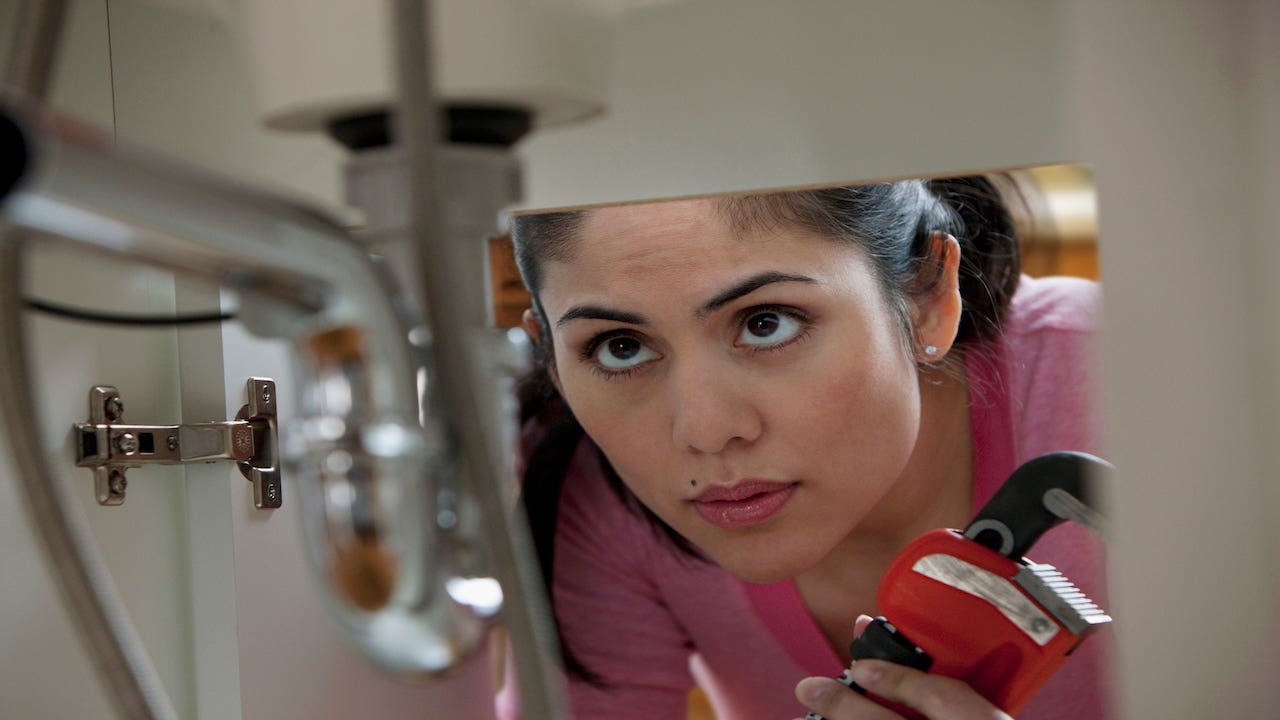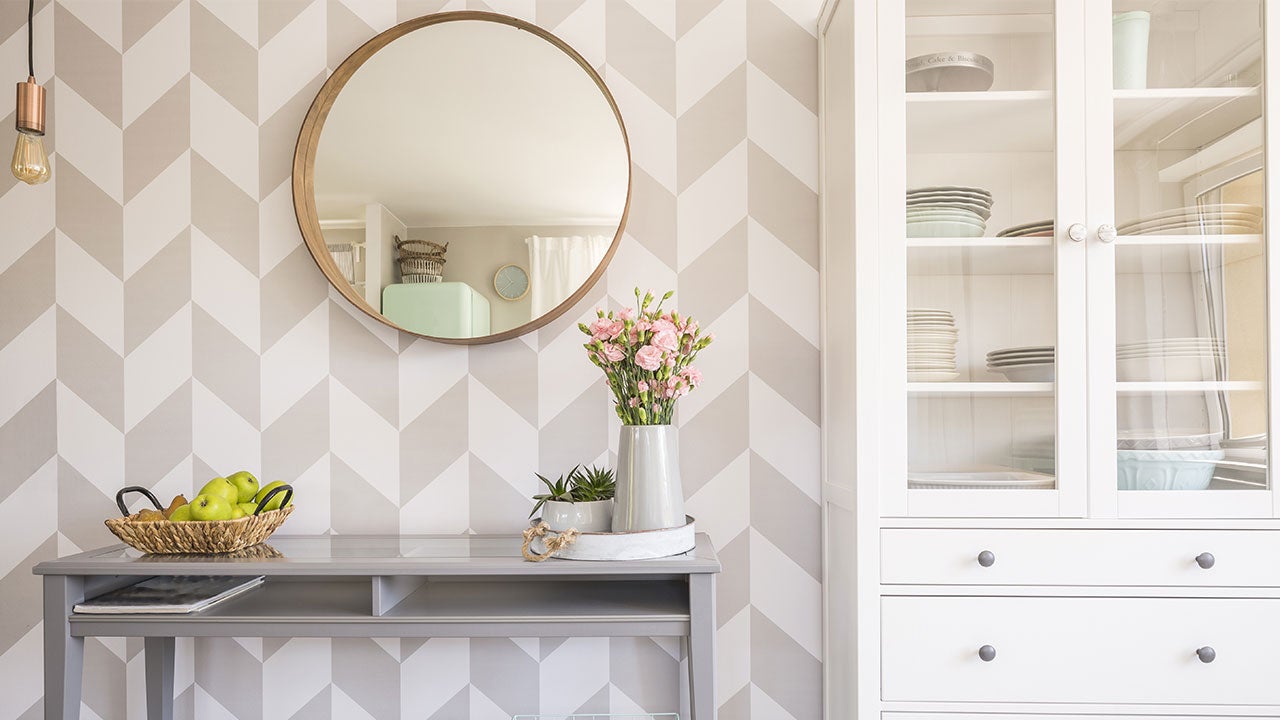5 home projects you shouldn’t DIY

Doing a project yourself can be a fun way to learn a new skill, occupy your free time, and most importantly, save money. However, while some projects are easy to DIY, others are best left to professionals for a variety of reasons — ranging from “they’re harder than they look” to “they don’t save that much money” to “they could put you in danger.”
Here are five home projects you should probably not DIY, despite what many advice blogs and videos say.
1. Mud and tape drywall
While just about anybody can mud and tape drywall themselves, it takes a lot of practice and skill to get to a result that looks good. If you’re not naturally someone with extreme attention to detail, gobs of patience, and steady hands, this task is best left to a contractor, especially if you want a result that doesn’t immediately make someone think it was, well, done by a DIY-er.
This is especially true if you were the one who hung the drywall yourself (a much simpler task). You most likely have some less-than perfect seams and multiple spots where your screws went too deep or not deep enough. An expert taper can elegantly hide those imperfections in a fraction of the time.
2. Install tile
Tile work is another project you should avoid DIY-ing if you want an aesthetically pleasing end result. Not every floor and wall is perfectly flat and it takes significant skill and experience to have even, crisp, lines with tile, especially with more complex designs (such as the spiffy ones you see in a remodeled shower). Leave this task to the experts if you want your guests or prospective buyers to remark “beautiful tile work” instead of wondering who let your toddler line up those squares.
3. Upgrade wiring
It’s ok to change outlet covers or replace light fixtures, if you’re careful. But wiring upgrades, along with most electrical installation work, should never be DIY-ed. Electricity can kill you — not just while you’re working on it, but after the work is completed if your amateurish connections cause a fire. Residential electrical fires account for an estimated 51,000 incidents, 500 deaths, and $1.3 billion in property damage annually, according to Electrical Safety Foundation International (ESFI).
In addition to being dangerous, DIY electrical work can be illegal in many principalities. Even more permissive states like Colorado that let homeowners install electrical wiring demand they apply for a permit first, and then that the work be up to code — as verified by inspections both before and after the area is covered. If you DIY your own electrical work on a home that is sold and ends up causing an injury or fire, you could be personally liable financially and criminally depending on where you live.
4. Fix broken pipes
Patching up broken pipes can definitely be done by a DIY-er in a pinch, but be prepared to have to go back and re-fix the issue multiple times, says Gregg Hartley, a Chicago-based retired master plumber of 40 years.
“When a pipe is broken, the only way to fix it is to have a variety of specialized tools for the specific sizing, material, and angles involved. If you somehow have all the right tools, the odds are high that your lack of knowledge will lead you to miss an important step that will lead to leaks later on,” he warns. Knowing what types of glue to use on which types of PVC and how long to cure for each is crucial, for example.
Often, though, the problem arises with properly re-sealing the fittings around the repair. Soldering is a tricky, potentially dangerous process, requiring the use of a propane torch. “Even if you’re avoiding having to weld by using shark-bite fittings and following all the steps the hardware store associate told you, you’re still gambling with having a leak in the future,” Hartley says. Conventional plumbers’ wisdom is that such devices — basically, connectors that join two separate pipes or pipe sections — are fine stopgaps, but don’t hold up over the long haul.
5. Replace gutters
Gutters often crack or break during the winter under the weight of ice or snow, combined with the freeze-thaw-refreeze cycle. Replacing them is important, but doing it yourself should be avoided if you value your safety and those of others.
The risks of a high-altitude activity on a sharply-angled surface are obvious. But even if you have a head for heights and the legs of a mountain goat, gutters are tough. At a minimum you need two people to replace gutters, but three to four is ideal, as there is much handing up pieces and tools and handing down debris.
Coordinating climbing a very tall ladder with a 20’+ long piece of wobbly metal between two of you takes practice, too.
Usually the price to have your gutters installed by the place selling them is a negligible addition to the total cost: The national average price of gutter repair is around $350, according to HomeAdvisor. Buying ladders that can reach your roof for a single project, potentially paying your insurance deductible after a fall, or the added stress of fighting with someone you love after shouting “a little lower” dozens of times just isn’t worth the savings.
The bottom line on home projects you shouldn’t DIY
There are dozens of great DIY projects to choose from. These five aren’t among them. Stay away from electrical wiring installation if you want to stay safe, and replacing broken pipes if you want to stay dry and avoid water damage or “returning from vacation to a new indoor swimming pool,” says Hartley. The modest savings of replacing gutters yourself usually doesn’t justify the danger and effort of this risky roofing project.
Finishing off drywall and installing tile aren’t as health-threatening. They fall more into the not-worth-it category — especially if you want the result to look good for prospective home buyers in the near future. The 30 to 40 percent you’ll save upfront doing it yourself you might lose later on, in smaller offers.
Just as you’ve spent years learning the best way to do your job, skilled trades workers have spent significant time perfecting their craft so they can do it safely, efficiently, and beautifully. Yes, contractors can be expensive. But sometimes, paying someone else to do a remodeling or renovation right the first time can save you more money in the long run — not to mention time, hassle, and maybe even your life.
You may also like

Homeowners choose minimal insurance due to rising rates. How risky is it?

Should you DIY roof replacement or repairs?

10 home renovations you can DIY on a budget



